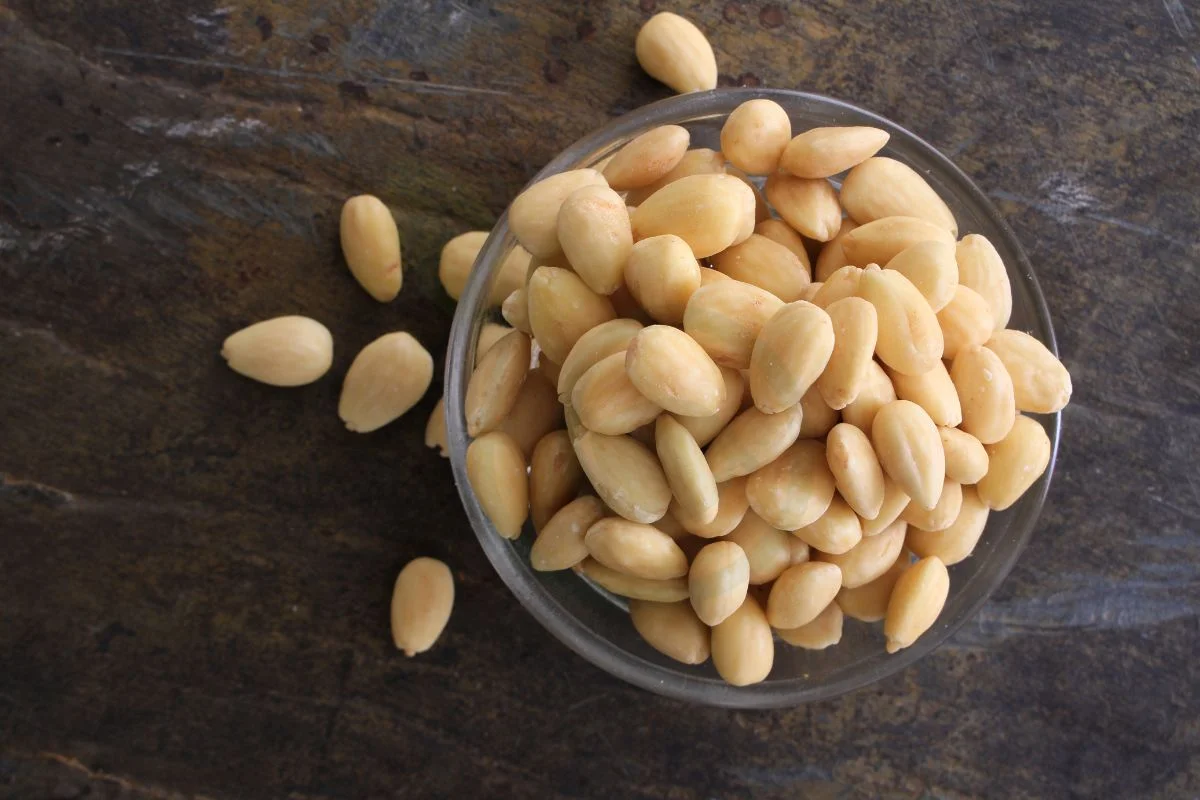Craving a nutty, creamy addition to your recipes? Look no further than blanched almonds! These versatile gems are the secret ingredient you've been searching for. Whether it's adding richness to sauces, creating velvety smooth almond milk, or achieving the perfect texture in baked goods, blanched almonds are a game-changer in the kitchen.
But what sets them apart from their unblanched counterparts? How can they effortlessly enhance both sweet and savory dishes? In this post, we'll dive into everything you need to know about these culinary powerhouses. From their unique preparation process to their myriad of uses across global cuisines, we'll unlock the full potential of blanched almonds and explore why they're an essential pantry staple for any food enthusiast.
Understanding Blanching Almonds
Blanching almonds is a simple yet essential process in the culinary world. When blanching almonds, they are briefly boiled before being plunged into cold water. This hot-and-cold treatment helps to loosen the almond skins, making it easier to remove them. The blanched almonds then undergo a drying process, enhancing their texture and making them ready for various uses.
The blanching process serves multiple purposes. First, it facilitates easy removal of the almond skins, which can be beneficial for certain recipes that require skinless almonds or almond flour. Second, by improving the texture of the almonds through this method, they become more versatile and suitable for different culinary applications.
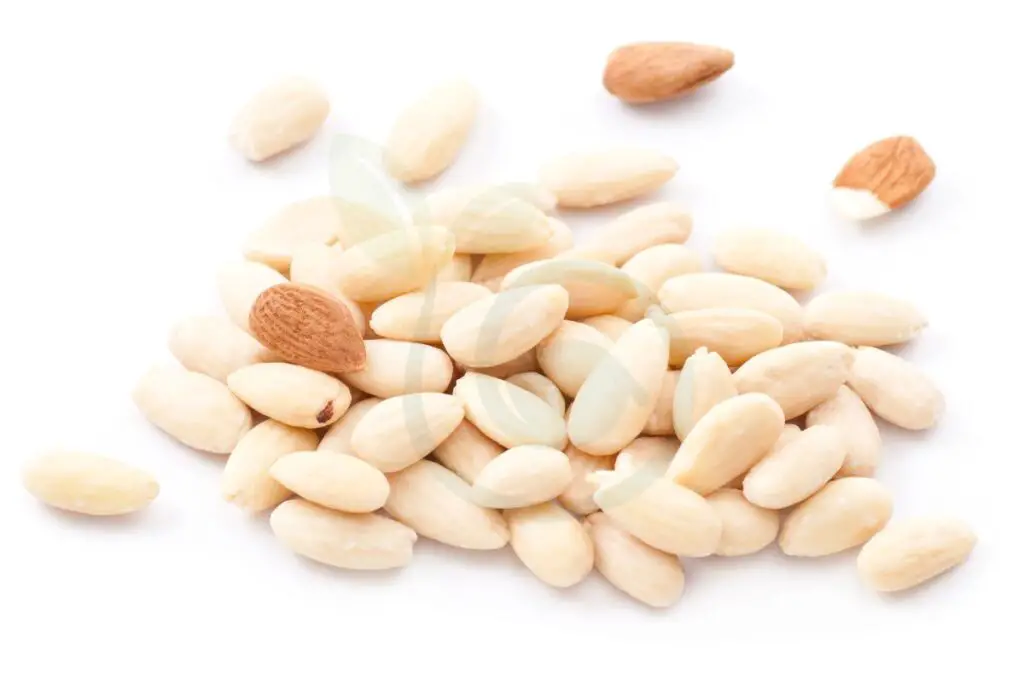
For instance, when preparing almond flour or paste for baking purposes or savory dishes like pilafs and salads, using blanched almonds ensures a smoother texture and appearance.
Despite undergoing the blanching process, blanched almonds retain their nutritional value. They remain an excellent source of healthy fats and protein while also providing essential nutrients such as vitamin E and magnesium.
This means that even though some processing is involved in blanching the almonds—such as exposure to heat—their nutritional content remains largely intact. As a result, incorporating blanched almonds into your diet can still offer health benefits without compromising on vital nutrients.
Blanched almonds find widespread use in various culinary applications. They are commonly utilized in baking due to their smooth texture resulting from the blanching process. Whether it's creating macarons or adding a delicate touch to cakes and cookies, blanched almonds play a crucial role in achieving desirable textures and flavors.
Moreover, these processed nuts can be ground into fine almond flour—a staple ingredient in gluten-free baking recipes—or transformed into creamy almond paste used in pastries and confections.
Beyond sweet treats, chefs often incorporate blanched almonds into savory dishes like pilafs where their mild flavor complements other ingredients perfectly.
Preparing for Blanching
Ingredients Needed
To start the blanching process, you will need almonds, which are the primary ingredient. You'll require water for boiling the almonds and ice water to cool them down after blanching. The almonds should be fresh and of high quality to ensure a successful blanching process.
It's essential to have all your ingredients ready before starting. Begin by gathering your raw almonds, water for boiling, and ice-cold water for cooling down the blanched almonds after they're removed from hot water.
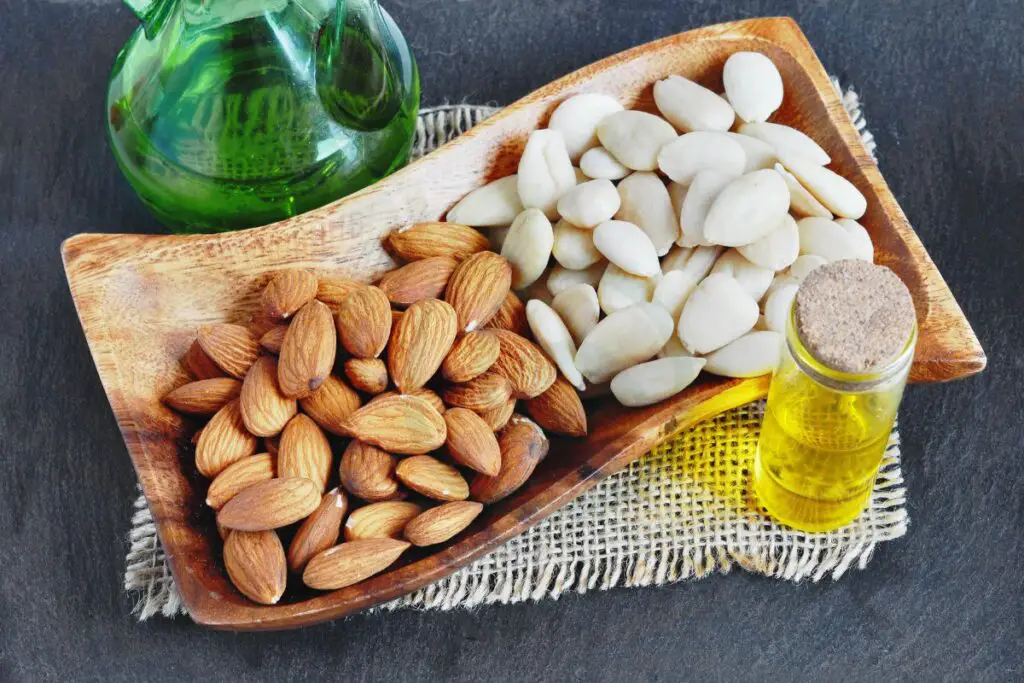
Tools Required
A few essential tools are required when preparing blanched almonds. You'll need a saucepan to boil the almonds in hot water. A slotted spoon is necessary for removing the almonds from the hot water once they are ready to be cooled down in ice water. Lastly, prepare a bowl filled with ice-cold water where you can transfer the boiled almonds using a slotted spoon.
Having these tools at hand will make your almond blanching process much smoother and more efficient. The saucepan is used for boiling while ensuring that there's enough space for all of your raw nuts without overcrowding them during this initial step.
Blanching Techniques
Boiling Method
Blanching almonds using the boiling method is a quick and effective way to remove their skins. Begin by placing raw almonds in boiling water for about 60 seconds. Then, drain them immediately after blanching and submerge them in ice water to halt the cooking process. This rapid change in temperature helps loosen the almond skins, making them easier to peel off.
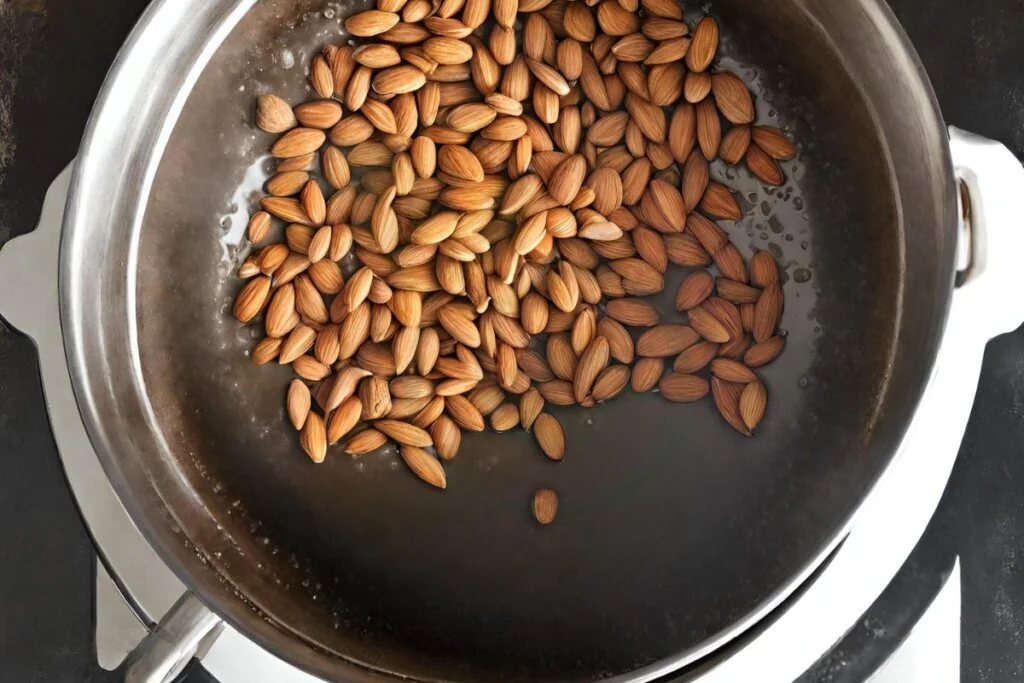
Once blanched, gently squeeze the almonds between your fingers to remove their skins easily. The softened skins should slip off effortlessly after blanching. After peeling, pat dry the almonds with a clean kitchen towel before using them in recipes or storing for later use.
Microwave Method
Another convenient technique for blanching almonds involves using a microwave. Start by placing raw almonds in a microwave-safe bowl filled with water. Microwave on high for about 1 minute, then allow the almonds to sit for an additional minute before draining and rinsing them with cold water prior to peeling.

This method provides a fast alternative to traditional boiling while still achieving similar results. The heat from the microwave helps loosen the almond skins, simplifying the peeling process without requiring extensive time or effort.
Overnight Soaking
For those who prefer planning ahead, overnight soaking offers an effortless way to prepare blanched almonds. Simply soak raw almonds in cold water overnight; this allows ample time for softening the skins and making them easier to remove during subsequent processing.
After soaking, drain and pat dry the softened almonds before proceeding with any recipe that calls for blanched nuts or storing them as needed.
Quick Blanching Method
Under 5 Minutes
Blanching almonds is a quick and easy process that can be done in under 5 minutes. To blanch raw almonds, start by boiling them for just one minute. This brief boiling process helps to loosen the skin from the almond kernels, making it easier to remove.
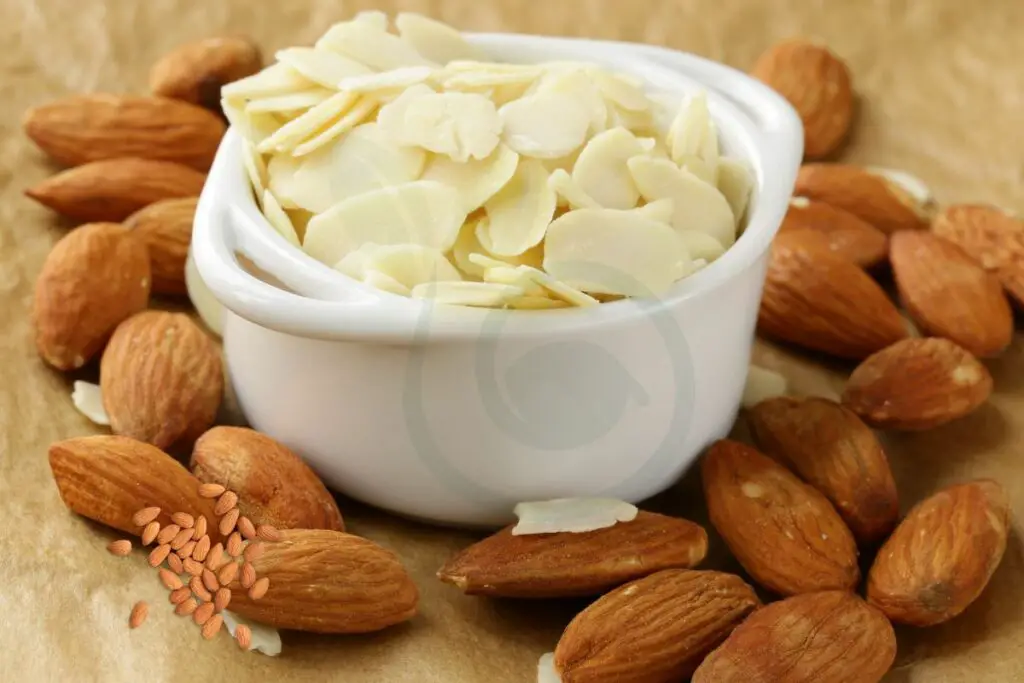
Once the almonds have been boiled for a minute, immediately transfer them into a bowl of ice-cold water. The rapid cooling shocks the almonds and prevents them from cooking further. After they've cooled down, you can simply squeeze each almond between your fingers to slip off their skins easily.
This method is incredibly efficient as it allows you to prepare blanched almonds within minutes without any specialized equipment or complicated procedures. It's perfect for when you need blanched almonds quickly for recipes like almond flour or marzipan.
Post-Blanching Steps
Drying Almonds
After blanching the almonds, it's crucial to ensure they are thoroughly dried before storage or use. Once blanched, spread the almonds on a baking sheet in a single layer. This allows them to air dry naturally at room temperature. Alternatively, you can opt for a dehydrator set at low heat to expedite the drying process.
The key here is thoroughness; make sure that the almonds are completely dry before proceeding with storage or any culinary application. Any residual moisture can lead to mold growth and spoilage over time, compromising their quality and taste.
Proper Storage
Once your blanched almonds are adequately dried, it's essential to store them properly for long-lasting freshness. Transfer them into an airtight container—this could be a glass jar or a plastic container with a tight-fitting lid—and keep it at room temperature or in the refrigerator.
To maintain their optimal flavor and texture, shield blanched almonds from moisture and direct sunlight during storage. These elements can degrade the quality of the nuts over time if not kept in check.
Remember that while blanched almonds have improved shelf life compared to unblanched ones due to reduced oil content on their surface, it's still best practice to use them within several weeks for maximum freshness and taste retention.
Health Advantages of Blanched Almonds
Nutritional Information
Blanched almonds are a powerhouse of nutrition. With approximately 160 calories per ounce serving, they offer a satisfying and healthy snack option. These almonds are packed with fiber, which aids in digestion and helps you feel full for longer periods. Their high protein content makes them an excellent choice for those looking to increase their protein intake.
Moreover, blanched almonds contain heart-friendly monounsaturated fats that can help lower bad cholesterol levels in the body. This makes them a great addition to a heart-healthy diet. The presence of significant amounts of vitamin E in blanched almonds provides powerful antioxidant properties that contribute to overall well-being.
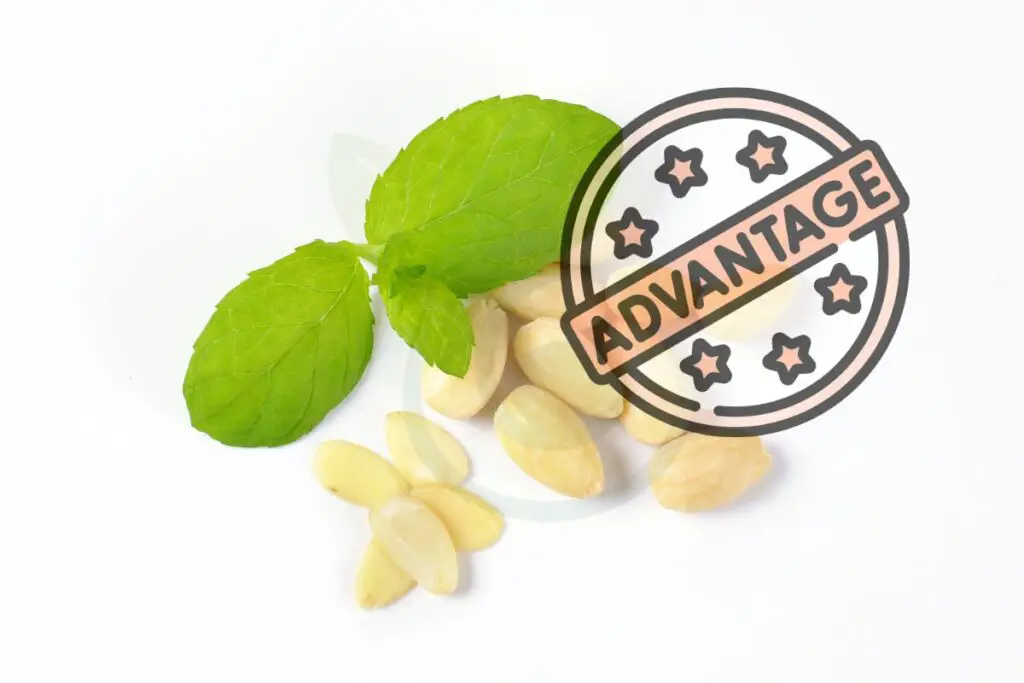
The magnesium content in blanched almonds is also noteworthy as it plays a crucial role in various bodily functions such as muscle and nerve function, blood glucose control, and blood pressure regulation.
Benefits for Overall Health
Incorporating blanched almonds into your diet offers numerous health benefits. Their high fiber content not only supports digestive health but also helps maintain healthy cholesterol levels and promotes weight management by keeping you feeling satiated for longer periods without overeating.
The monounsaturated fats present in these nuts provide essential fatty acids that support heart health by reducing the risk of cardiovascular diseases when consumed as part of a balanced diet.
Furthermore, the abundance of vitamin E found in blanched almonds contributes to skin health by protecting the skin from damage caused by free radicals. Vitamin E also supports immune function and has anti-inflammatory properties that aid overall wellness.
Consuming magnesium-rich foods like blanched almonds can help regulate blood sugar levels, reduce insulin resistance, alleviate migraines or headaches, improve PMS symptoms, and enhance exercise performance due to its influence on energy production within cells.
Recipes and Cooking Ideas
Mediterranean Dishes
Blanched almonds are a versatile ingredient widely used in Mediterranean cuisine. In desserts like baklava, the crunch of blanched almonds adds a delightful texture. Moreover, they bring an enjoyable crunch to savory dishes such as couscous and tagines.
These nuts are also commonly incorporated into savory dishes, such as almond-stuffed olives. The addition of blanched almonds not only enhances the flavor but also provides a satisfying crunch that complements these dishes perfectly.
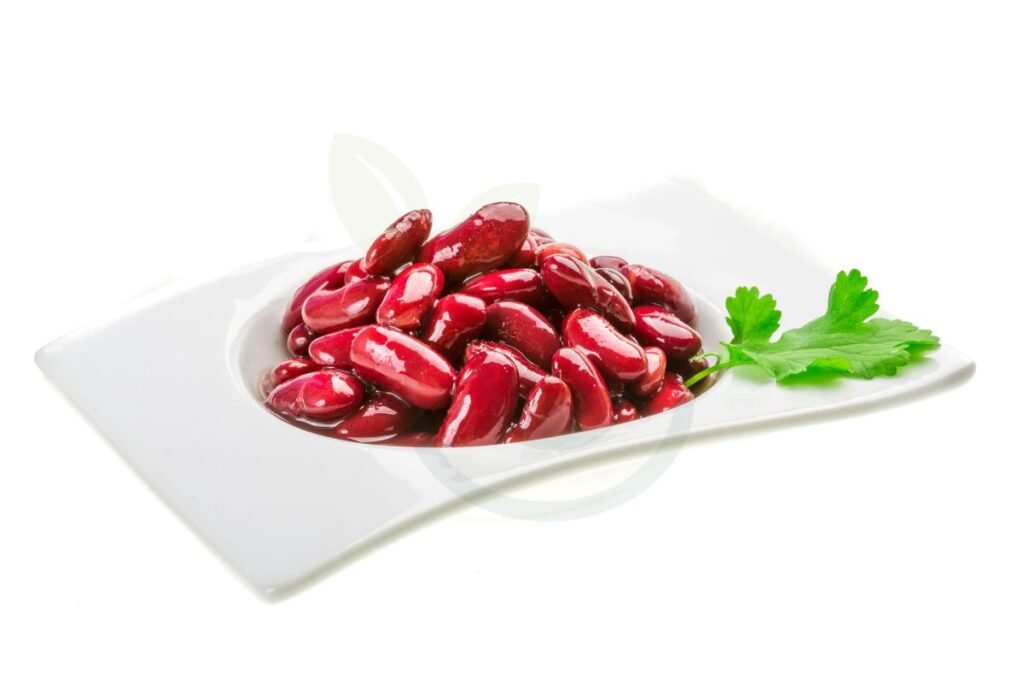
Recipe Inclusions
Consider using blanched almonds for almond-crusted fish or chicken. These recipes offer both a unique taste and pleasing texture that elevate the dish's overall appeal.
For those seeking dairy alternatives or looking to explore new flavors, blanched almonds can be transformed into nutritious almond milk. This homemade alternative is not only delicious but also offers various health benefits compared to traditional dairy milk options.
Furthermore, when creating delectable desserts like almond macaroons and financiers, utilizing blanched almonds showcases their delicate flavor profile while providing an appealing textural element that elevates these sweet treats.
Purchasing Blanched Almonds
Where to Buy
You can find blanched almonds at various places, including grocery stores and specialty food markets. These establishments often carry a wide selection of nuts and seeds, making it convenient for you to purchase blanched almonds for your recipes. Consider purchasing them online from reputable retailers that specialize in offering high-quality nuts and seeds. This option allows you to access a broader range of choices without leaving the comfort of your home.
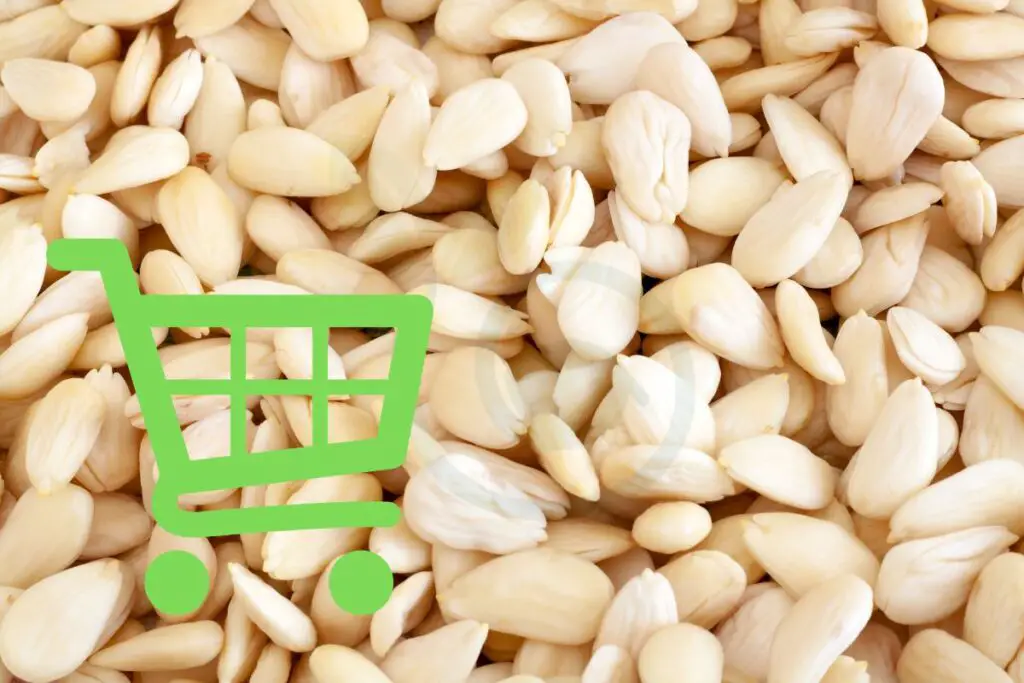
When buying blanched almonds, look for organic or raw options based on your personal preferences. Organic blanched almonds are grown without synthetic pesticides or fertilizers, making them a great choice if you prioritize environmentally friendly products with minimal chemical exposure. On the other hand, raw blanched almonds have not been subjected to roasting or other forms of heat processing, which may appeal to individuals who prefer their nuts in their natural state.
Utilizing Almond Byproducts
Almond Skins Uses
Blanched almonds are a versatile ingredient, and their byproduct, almond skins, can also be utilized in various ways. Dried almond skins can be ground into powder for baking or smoothies. This adds a nutty flavor and extra nutrients to your recipes. You can also incorporate almond skins into homemade granola or energy bars for added nutrition and texture.
Almond skin tea is another creative way to utilize this byproduct. Simply steep the almond skins with other herbs and spices to create a flavorful and aromatic beverage. The tea not only provides a unique taste but also offers potential health benefits due to the presence of antioxidants in the almond skins.
The use of blanched almonds doesn't stop at just the nuts themselves; their byproducts offer an opportunity for creativity in cooking and baking. Whether it's adding nutritional value to your dishes or exploring new flavors, incorporating almond skins into your culinary creations can elevate both the taste and health benefits of your meals.
Incorporating these alternative uses of blanched almonds' byproducts not only reduces food waste but also contributes to creating more sustainable kitchen practices. It's an excellent way to maximize the potential of every part of this nutritious nut.
Closing Thoughts
Congratulations! You've now mastered the art of blanching almonds like a pro. Whether you're aiming for a smoother texture in your almond-based dishes or seeking to unlock the health benefits of blanched almonds, you're all set to elevate your culinary game. So, what are you waiting for? Get blanching and add a delightful twist to your favorite recipes with these newfound skills. Don't forget to explore different blanching techniques and unleash your creativity in the kitchen. Happy blanching!
Frequently Asked Questions
What are the benefits of blanching almonds?
Blanching almonds helps in removing the skin, making them easier to digest and enhancing their appearance for culinary purposes. It also allows for better absorption of flavors when using them in recipes.
How do I quickly blanch almonds?
To quickly blanch almonds, boil them for about a minute, then transfer to cold water before peeling off the skins. This method efficiently removes the skins without compromising the texture or taste of the almonds.
Are there any health advantages to consuming blanched almonds?
Yes, eating blanched almonds provides various health benefits such as improved digestion due to reduced enzyme inhibitors and enhanced nutrient absorption. They offer a smoother texture and milder flavor compared to unblanched ones.
Can I use almond byproducts after blanching?
Absolutely! After blanching, you can utilize almond byproducts like almond meal or almond flour in baking or cooking. These versatile byproducts add a delightful nutty flavor and nutritional value to various dishes.
Where can I purchase high-quality blanched almonds?
You can find high-quality blanched almonds at specialty grocery stores, health food stores, or online retailers that specialize in nuts and dried fruits. Look for reputable brands known for their freshness and quality standards.
Image Source: Paid image from CANVA

